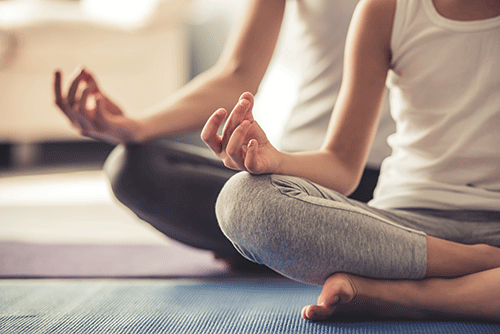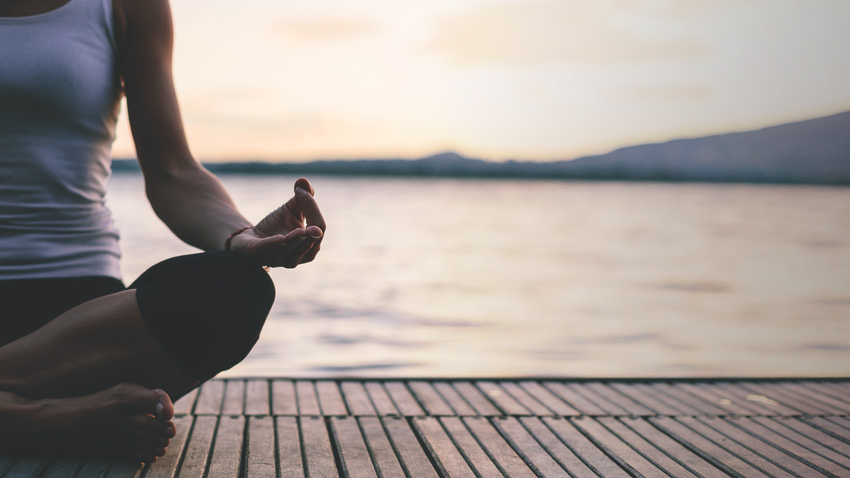How to Meditate? Tips for Developing Your Suitable Reflection Space
How to Meditate? Tips for Developing Your Suitable Reflection Space
Blog Article
How to Meditate: A Step-by-Step Technique to Achieving Mindfulness and Calmness
Meditation serves as an effective device for achieving mindfulness and psychological tranquility in a hectic globe. By comprehending the essential concepts and techniques entailed in reflection, people can cultivate a technique that improves their overall health.
Understanding Meditation
Comprehending meditation involves understanding its essential concepts and techniques, which act as the structure for the method. At its core, reflection is a mental workout focused on advertising relaxation, developing internal energy, and establishing empathy and insight. The method motivates individuals to concentrate their interest, commonly with strategies such as deep breathing, visualization, or rule repetition.
Reflection can be classified right into different designs, including mindfulness, transcendental, and loving-kindness reflection, each with distinct purposes and methodologies. Mindfulness reflection stresses present-moment recognition and non-judgmental observation of feelings and ideas, while copyright entails using certain mantras to transcend regular mind. Loving-kindness meditation focuses on establishing a mindset of love and empathy towards oneself and others.
Regardless of the strategy employed, the primary objective remains constant: to grow a much deeper understanding of the mind and its patterns. This self-awareness fosters emotional resilience, quality of thought, and a profound feeling of calmness (How to meditate?). By understanding these methods and concepts, people lay the groundwork for a successful meditation practice that can dramatically boost their general well-being
Planning For Your Technique
Prior to starting your reflection technique, it is necessary to develop a setting for focus and leisure. Select a quiet area where you are unlikely to be disturbed. This might be an edge of an area, a garden, or any place that evokes a feeling of peace. Make sure that the area is tidy and free of clutter, as a neat setting can assist clear the mind.
Take into consideration the illumination, as all-natural light can enhance your state of mind and power. Soft, cozy lighting is typically much more relaxing than harsh fluorescent lights. Additionally, select a comfy temperature level, ensuring that you are neither too warm nor as well cold.
Integrating components that advertise harmony can better boost your experience. This could consist of soft cushions or blankets for comfort, in addition to calming fragrances from crucial oils or scent. It can also be useful to have actually a timer established for your meditation session to protect against diversions from clock-watching.
Fundamental Meditation Techniques

One more reliable strategy is body check reflection. This involves psychologically checking your body from head to toe, seeing any type of locations of stress or discomfort and knowingly loosening up those muscle mass. This practice fosters a deeper connection in between your mind and body.

Finally, loving-kindness reflection focuses on growing empathy towards on your own and others. Calmly repeat phrases of goodwill, improving psychological health and interconnectedness. Each of these techniques works as a structure for your meditation journey, enabling you to locate the technique that resonates finest with your individual technique.
Maintaining Focus and Mindfulness

Establishing a specialized meditation space can enhance the capacity to preserve mindfulness. A peaceful, clean environment decreases disturbances, enabling much deeper immersion in the method. In addition, setting a time restriction can aid handle expectations; beginning with much shorter sessions may reduce the shift into longer practices.
Using techniques such as body scanning or observing sensations can likewise bolster mindfulness. These approaches urge practitioners to remain present and engaged with their physicality, anchoring their interest in the moment. Normal method is vital; the brain develops resilience gradually, developing a more powerful capacity for focus.
Incorporating Reflection Into Day-to-day Live
Incorporating meditation right into day-to-day live can transform regular tasks into opportunities for mindfulness and self-reflection. By incorporating mindfulness practices right into typical jobs, people can cultivate a better feeling of visibility and tranquility among the numerous hours of day-to-day life.
Begin by recognizing moments throughout your day where you can pause and exercise mindfulness. For example, throughout your early morning commute, concentrate on your breath or the sensations of the atmosphere around you. In the kitchen area, method food preparation as an introspective method, savoring the structures, colors, and scents of the components. Also mundane activities like cleaning dishes or strolling can come to be possibilities for reflection by routing your interest to the feelings of activity and the sounds resource bordering you.
Furthermore, my website alloting dedicated times for reflection can reinforce its method. Start with brief sessions, slowly boosting duration as you become a lot more comfortable. Usage reminders or cues-- like a specific time of day or a relaxing sound-- to establish uniformity.
Eventually, the goal is to weave mindfulness right into the material of every day life, enabling you to come close to each moment with objective, therefore boosting your overall sense of wellness and clarity.
Verdict
To conclude, efficient meditation needs a quiet environment, a comfortable position, and a concentrate on the breath. By allowing thoughts to arise without judgment and regularly redirecting attention to the breath, experts can achieve improved mindfulness and peace. Integrating different techniques, such as body scanning and loving-kindness expressions, can additionally enhance the technique. Routine reflection, also in brief sessions, fosters a deeper connection to today moment, inevitably leading to better calm and mental clarity in day-to-day live.
Reflection can be categorized into different styles, including mindfulness, transcendental, and loving-kindness reflection, each with distinct functions and methods. Mindfulness reflection emphasizes present-moment awareness and non-judgmental monitoring of sensations and thoughts, while copyright involves the usage of details concepts to transcend common idea procedures.With your meditation space prepared, it's time to check out numerous basic reflection strategies that can aid cultivate mindfulness and internal peace.Constantly preserving focus and mindfulness during meditation can see post be difficult, especially for those brand-new to the method.Developing a specialized meditation room can boost the capacity to maintain mindfulness.
Report this page